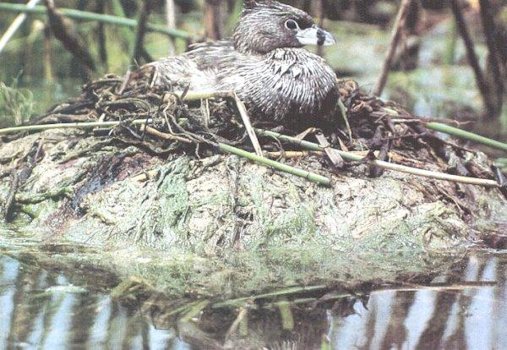
|
Effect of Precipitation on Birds The places birds prefer to live are largely related to the species and structural diversity of plant communities. The amount and timing of rainfall or snowfall influences plant growth and so affects the distribution and abundance of birds. For example, the extensive irrigation of farmlands in the Great Plains has resulted in the growth of trees in grassland areas. The trees provide habitat for tree-living birds that have expanded their breeding ranges into this area. Water influences the ecology of birds in other ways too. Spring floods, for instance, can destroy nests. Some species have adapted to reduce such losses. The Pied-billed Grebe builds a floating nest of decaying vegetation and anchors it loosely to aquatic plants in backwaters, ponds, and lakes. As the water level rises, the nest floats upward; when the water level drops, the nest drops. |
|
Pied-billed Grebe
|
|
|
The Clapper Rail nests in coastal marshes that are occasionally flooded by storm tides. If the water rises slowly enough, the rails work frantically to build their nests higher and keep their eggs above water. Of course, if the water rises to fast, the nests are swept away. Snow and ice often cover the foods of northern birds in winter, which is one reason why so many northern birds migrate. When freezing rain coats the tails of roosting birds, their only escape is to leave tail feathers behind. This loss makes the birds more vulnerable to predators and renders flight less efficient at a time when energy demands are already high. |
|